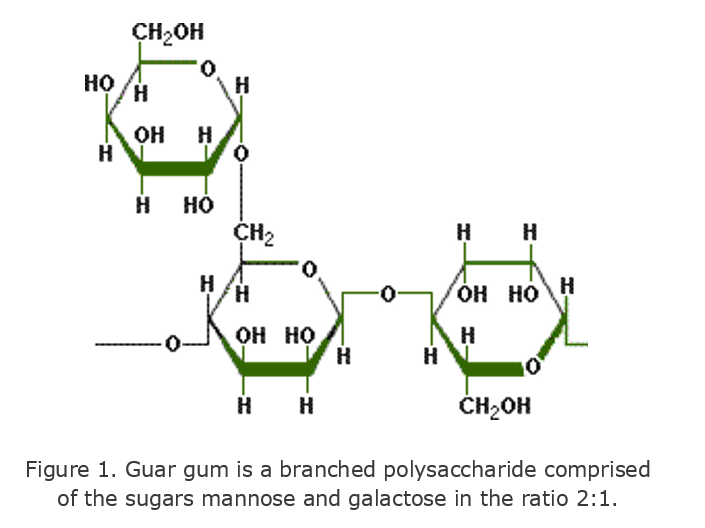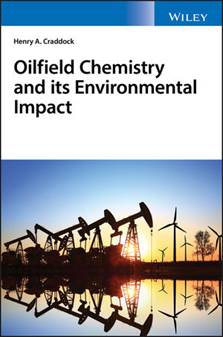Oilfield & Energies
Chemical Treatment in Shale Gas Delivery 12th November 2018
By Henry Craddock PhD, Director of HC Oilfield and Chemical Consulting
Henry Craddock PhD, Director of HC Oilfield and Chemical Consulting, discusses the use of chemicals in the extraction and producti
Henry Craddock PhD, Director of HC Oilfield and Chemical Consulting, discusses the use of chemicals in the extraction and production of shale gas and oil, and in particular shale gas.
Natural gas is an efficient energy source and the cleanest-burning fossil fuel. In 2015, the United States Energy Information Administration (EIA) estimated that the global recoverable reserves of shale gas were over 7,500 trillion cubic feet.1 Although the energy industry has long known about huge gas resources trapped in shale rock formations, it is only over the last two decades that energy companies have combined two established technologies – hydraulic fracturing and horizontal drilling – to unlock this resource.
Commentators have been warning of a significant energy gap arising in the near future.2 As Western and developing nations move from fossil fuels to other means of power generation, and as world energy markets continue to be vulnerable to disruptions precipitated by events ranging from geo-political strife to natural disasters, power demands may be stretched. The Ukraine–Russia gas dispute in January 2009 caused the largest natural gas supply crisis in Europe’s history. Energy security is becoming a strategically important political issue. Shale gas could offer capacity where demand has the potential to exceed supply, and nations with shale gas reserves can be become less reliant on big energy power brokers such as Saudi Arabia and Russia for supplies.
Hydraulic fracturing involves forcing a mixture of water, sand and chemicals into shale rock formations under high pressure. In the US alone, thousands of wells have been drilled and fractured to produce gas from massive shale formations. In doing so, large volumes of water are used to produce and maintain the hydraulic pressure required to fracture the formation and allow the introduction of proppant, usually sand, to keep these fractures and microfractures open.
Chemicals such as viscosity thickeners and surfactants are used in the delivery of these proppants, and others, such as biocides, scale inhibitors and corrosion inhibitors, are utilized in the treatment of the delivery water in order to maintain its cleanliness and minimize flow assurance issues (in either the delivery of the proppant or the recovery of the shale gas). These added chemicals make up less than 1% by volume of the delivery packages of water and sand, but nonetheless amount to a significant amount as the volumes of water used are usually millions of litres. Probably the most important additive is the viscosifier, which is normally a guar gum (Figure 1) or derivative such as hyropropylguar (HPG).

Guar gums and related derivatives are not self-gelling and require a cross-linking agent to be added to cause them to gel in water. Guar gum is very economical because it has almost eight times the water-thickening potency of similar materials and, therefore, only a very small quantity is needed for producing sufficient viscosity – less than 0.06% of the total volume. Also, it is biodegradable and poses no environmental or toxicological problems.3 As Guar is a natural product it is subject to microbial degradation and therefore biocides (in small amounts) are added to the mix. Additionally, inorganic scale and corrosion have been reported as the biggest flow assurance challenges due to the massive number of wells with limited water samples, leading to delayed water production and uncertainty of risk severity and inappropriate chemical dosages.4
In the last two decades, chemical inhibitors have been widely deployed in the US shale gas and oil field operations without much regard to appropriate optimization, which has resulted in chemical consumption being one of the top Loss Of Expenditure (LOE) contributors. In recent years, a number of management practices have deployed to reduce and optimize chemical usage. For example, a three-step scale risk ranking methodology has been developed and verified to predict the severity, rank the risks, and identify the requirement for chemical treatment. Also, a number of scale prediction tools and corrosion evaluation tools are used to cross compare and validate accuracy. Water sampling procedures are identified following this cross-check analysis.4
Added chemicals and their deployment in shale gas and oil development have led to public concern over potential water course contamination. However, the chemicals used in these treatments are often the same as, or derivations of, chemicals used in water treatment and purification. The misinformation and lack of factual presentation to the general public has led to wide spread concern over the application of fracturing operations outside of the US, particularly in Europe.
The use of chemicals in the production of this resource has a minimal impact on the environment and is outweighed substantially by the energy security benefit and the overall environmental impact reduction of using a cleaner fossil fuel.
References
- US Energy Information Administration (EIA). World Shale Reserouce Assessments, 2015 (http://www.eia.gov/analysis/studies/worldshalegas).
- Harvey F. Guardian, 26th January 2016 (www.theguardian.com).
- US Food & Drug Administration (FDA). Code of Federal Regulations, Food and Drugs, Title 21, Sec. 184.1339.
- Guan H. CORROSION 2016, Vancouver, Canada, 6-10 March 2016: NACE-2016-7674.

Author:
Henry Craddock, Director of HC Oilfield and Chemical Consulting, Kirriemuir, Angus, Scotland.
T: +44 (0) 1575 572304
Henry Craddock is also the author of Oilfield Chemistry and its Environmental Impact, published by Wiley in July 2018.


